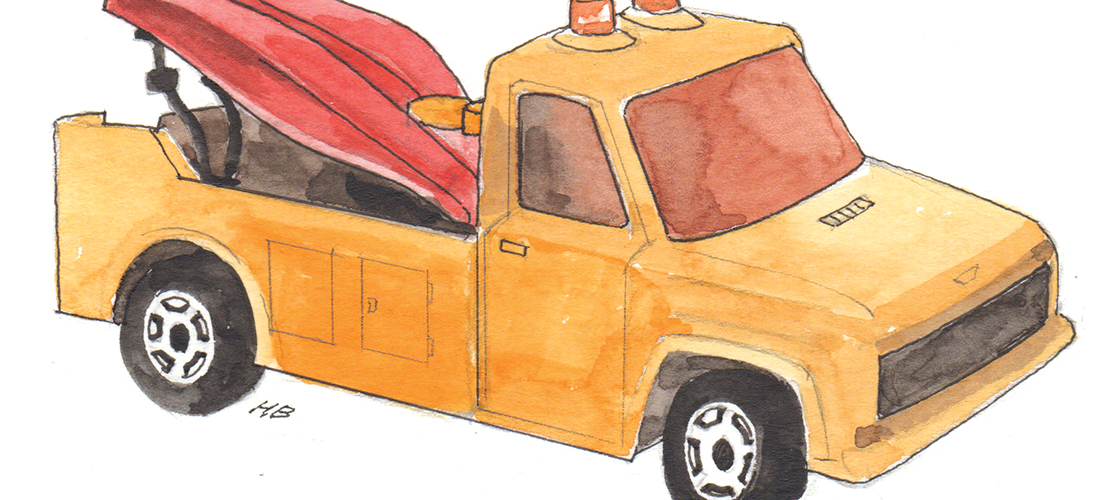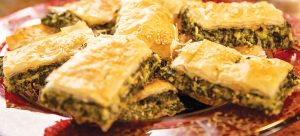
Matchless
Low mileage, one owner, gently used
By Bill Fields
My ’66 Mustang needs a paint job, and the wheels are wobbly on my ’62 Ferrari. But compared with my ’63 Vauxhall Estate Car, whose windows are broken and back hatch is missing, the first two vehicles are looking good.
Now, I’m not really a car collector. I’m not even a real collector of these 1:64 scale miniatures that had so many of us hoping we had 49 cents in our pocket — approximately two visits from the tooth fairy — for a purchase years ago. My dozen were rescued from the corner of a closet where they had been garaged for a long time.
Lots of things shout “child of the ’60s,” but does any toy do it better than a Matchbox car?
As the advertising copy said: “For boys and girls of all ages . . . built of pressure die-cast metal by English craftsmen . . . nothing to assemble, ready to use . . . colorful nontoxic baked enamel finish, authentic in every detail.”
I’m glad I never snacked on my vehicles, just in case, but the Matchbox Series did have a lot going for it. Detroit might not have ever been usurped as a car capital if its workmanship had been as fine as that in the toys manufactured in England by Lesney Products.
Although small enough to fit in a child’s hand, some of the models consisted of more than 100 parts. They were finely assembled, with details that mirrored the real thing. Automakers on both sides of the Atlantic, happy with the publicity, shared specifications with the toy company that allowed for great authenticity in the replicas.
As a kid who loved small things — a pocket magnetic checkers set, tiny stapler, mini-football helmet pencil sharpener, miniature golf — Matchbox cars were right in my wheelhouse.
Lesney began after World War II in London, a collaboration of friends and military veterans Leslie Smith and Rodney Smith, who used syllables from each of their first names as the company moniker. Toys weren’t the focus of the die-cast business until another man, Jack Odell, joined the original partners.
The Matchbox brand sprouted from Odell’s initial Lilliputian design — a brass steamroller he built in 1952 for his daughter that met her school’s edict that students couldn’t bring toys larger than a matchbox. Odell and Leslie Smith started producing their line of vehicles in 1953, Rodney Smith having sold out to his partners two years earlier. Their first design was a miniature gilded coach for the coronation of Queen Elizabeth II, a hot seller that was followed by a bulldozer, fire engine and, in 1954, Lesney’s first car, an MG.
Lesney was producing more than a million vehicles a week by the early 1960s as Matchbox cars were being sold in great numbers all over the world. “We produce more Rolls-Royces in a single day,” Odell told The New York Times, “than the Rolls-Royce company has made in its entire history.”
My fanciest Matchbox model is a ’64 Lincoln Continental, sea-foam green, whose trunk was just big enough to hold a piece of candy corn. I like my oldest model, a ’61 gray and red “Bedford Tipper” truck that I probably was given before I was old enough to really bang it around, which could explain why it looks as if it just came off the lot.
I was well-equipped for emergency response, owning a ’62 ambulance, ’65 wrecker and ’66 firetruck, its removable plastic ladder on the roof and ready to rescue someone trapped on the second story. There are versions of the Dodge Wreck Truck that make them a rare and valuable collectible because of a manufacturing quirk, but mine is run-of-the-mill and a little sad, its tow hook gone. I’ll blame the snapped-off part on my nephews, who were playing with my little cars on visits to their grandparents about the time I was getting my driver’s license.
New generation, same old fun. OH
Southern Pines native Bill Fields, who writes about golf and other things, moved north in 1986 but hasn’t lost his accent.





